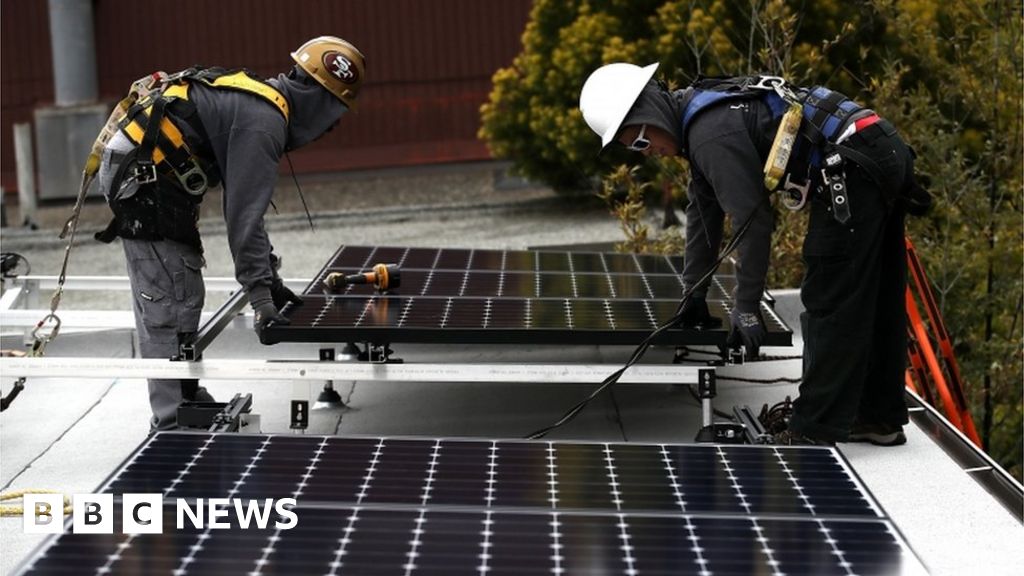California Becomes First US State To Mandate Solar On Homes

 Image copyright
Getty Images
Image copyright
Getty Images
California has become the first US state to mandate solar panels on new homes and apartment buildings built after 1 January, 2020.
The California Energy Commission unanimously approved the plan, making it the state's next big step towards ending greenhouse gas emissions.
State law already requires that 50% of all electricity comes from non carbon-emitting sources by 2030.
The mandate still requires approval from the Building Standards Commission.
Critics have been quick to note that the solar panel mandate will add between $8,000 (£5,900) and $12,000 to a home's cost.
The Energy Commission estimates, however, that homeowners will only see an additional $40 to monthly mortgage payments.
At the same time, the commission said they will save $80 on heating, cooling and lighting costs per month.
The new mandate does offer exceptions where solar power is not feasible or cost effective, such as homes located entirely under shade.
Builders will have the option of adding solar panels to individual homes, or building shared power systems for a group of homes.
Current homeowners would not be required to add solar to existing homes, though many in the state have done so using government rebate programmes.
California has invested over $42m in solar energy to date, and the mandate will likely give a further boost to the solar industry statewide.
The Solar Energy Industries Association (SEIA) already ranks California as the top state in the US when it comes to solar energy.
Nearly 16% of the state's electricity last year came from solar.
Abby Hopper, SEIA president, said on Twitter that California's mandate demonstrates "that promoting home solar makes sense".
The California Building Industry Association has been working with the Energy Commission on the new standards for the past decade, according to ABC News.
The Building Standards Commission is expected to make a decision later this year.

Media playback is unsupported on your device
Lynn Jurich, co-founder of solar installation company Sunrun, told the New York Times that large market expansions like this make it "very cost effective to do".
"There's also this real American sense of freedom of producing electricity on my rooftop," Ms Jurich told the Times.
"And it's another example of California leading the way."
California is already ahead of schedule with its long-term energy goals: the California Public Utilities Commission reported that they will likely meet the 2030 goal 10 years ahead of schedule.
From Chip War To Cloud War: The Next Frontier In Global Tech Competition
The global chip war, characterized by intense competition among nations and corporations for supremacy in semiconductor ... Read more
The High Stakes Of Tech Regulation: Security Risks And Market Dynamics
The influence of tech giants in the global economy continues to grow, raising crucial questions about how to balance sec... Read more
The Tyranny Of Instagram Interiors: Why It's Time To Break Free From Algorithm-Driven Aesthetics
Instagram has become a dominant force in shaping interior design trends, offering a seemingly endless stream of inspirat... Read more
The Data Crunch In AI: Strategies For Sustainability
Exploring solutions to the imminent exhaustion of internet data for AI training.As the artificial intelligence (AI) indu... Read more
Google Abandons Four-Year Effort To Remove Cookies From Chrome Browser
After four years of dedicated effort, Google has decided to abandon its plan to remove third-party cookies from its Chro... Read more
LinkedIn Embraces AI And Gamification To Drive User Engagement And Revenue
In an effort to tackle slowing revenue growth and enhance user engagement, LinkedIn is turning to artificial intelligenc... Read more

